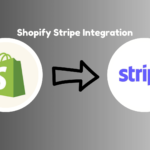Shopify vs Stripe – Which One Is The Best Top E-Commerce Platform
Last Updated | January 18, 2024
Table of Contents
An Overview – Difference between Shopify vs Stripe
Shopify is known for developing quick and easy online stores with a range of useful features to set up and run your business. It powers more than tens and thousands of e-commerce stores that include Tesla Motors, CrossFit, Foo Fighters, Brtianicca, Encyclopedia, GitHub, and so on. With Shopify, users are allowed to set up and an online store without having to deal with many technical aspects that are required for developing websites. The platform saves them from paying some developers a good sum of money for developing a business website and store. Shopify allows merchants to blend all aspects of their online stores, i.e., uploading products, customizations, best Shopify design changing, accepting credit card payments, tracking orders and transactions, etc.
Whereas Stripe is defined as ‘payment for developers.’ The platform enables developers to accept credit card payments on the web. Simply to say, Shopify is an e-commerce platform, while Stripe can be counted as one of the payment services.
Most popular Shopify features are:
- A huge variety of themes to pick from, i.e., more than a hundred themes.
- Easy to customize your online store as per your vision.
- Boost your sales through quick orders.
On the other hand, the key features of Stripe are as follows:
- Full-stack Payments – When using Stripe, you don’t need to own a merchant account or payment gateway. The platform handles everything itself, from storing a card, direct payouts, and subscriptions. It enables you to make your own payment forms by avoiding the requirements of PCI.
- API That Gets Out Of The Way
- Great Pricing – 2.9 percent and 30 cents on each successful charge. No need to worry about setup and monthly fee. Also, there is no card storage fee or other hidden costs.
Stripe Features
Let’s dive into Shopify vs. Stripe comparison and learn interesting features of both platforms.
With Stripe, you can easily sign up for an online account easily and quickly and begin accepting payments. Being a payment service provider, Stripe collects all funds of their customers into one merchant account before it sends money to its customers’ individual bank accounts; therefore, you do not have to deal with the long process of applying for a merchant account.
Also, aside from getting access to the standard payment platform of Stripe:
- You can receive payments from major debit and credit cards and from wallets such and Apple and Google Payments.
- It will be easier for you to get international payments and that too over 135 countries.
- You can enjoy local payment methods.
- You can accept wire, debit, credit, or ACH transfers.
To accept all the payments mentioned above through Stripe, you get:
- You get an embeddable checkout that you can use on mobile, tablet, or desktop.
- A customized user interface toolkit that helps you build your own unique form
- Online invoicing via Stripe Billing. However, Stripe terminal (physical terminal) can be purchased to receive payments in-person.
- Stripe Connect offers you to add several payment capabilities to your marketplace or platform.
- Stripe Sources helps you to process all the physical checks that your customers send you.
- With Stripe, you get integration options with more than 450 platforms along with powerful extensions like WooCoomerce, Xero, BigCommerce, Squarespace, FreshBooks, etc.
Moreover, Stripe also offers its users:
- Data security and encryption
- PCI-compliance
- Authentication and authorization logic for optimization of revenue
- Real-time and unified reporting
- Unified payouts having the option of instant payouts. However, it requires extra fees.
- Fraud protection via Stripe Radar
- 24/7 customer support through phone or email.
- Android and iOS dashboard apps.
- Business dashboard that allows you to manage all your business operations, including permissions, roles, etc.
Shopify Features
Shopify is a dedicated e-commerce development platform services. Therefore, it offers you everything that you need to build an online store from scratch and start getting orders immediately. Many brands have been using Shopify, and you’d be surprised to learn the big names that have relied on the platform. Being a store builder, Shopify is well-equipped with all the necessary tools, options, and features that can make the job of store building pretty easy for you. It gives you access to everything that you will be needing to begin selling online. With Shopify, you can develop, customize, and market your brand efficiently. Moreover, one of the most considerable features that come with Shopify subscriptions is the payment accepting ability.
Shopify integration offers with more than a hundred external/ third party payment services. However, the availability depends on your location. Some popular names for payment providers are PayPal, Adyen, Authorize.Net, WorldPay, etc. But the best thing is that Shopify has its own payment gateway that is known as Shopify Payments. And what you should know is that Stripe powers Shopify Payments. Surprising enough, right?
We must disclose the fact that Shopify Payments works, for now, is only available in a total of 15 countries that includes Canada and the U.S.
On the other hand, Stripe is available in almost 36 countries globally.
Shopify payments enable you to use all popular payment methods, including credit and debit cards, local currencies, mobile wallets, within your e-commerce store. It does not ask you to manage or integrate your Shopify account through another platform.
Moreover, using the features that come with Shopify, users will be able to create and customize an exceptional store that helps build a strong brand identity. You can also customize your checkout and shopping cart page. There is also an option to add a ‘buy’ button to your existing website and continue selling your products on channels like Amazon, Facebook, Instagram, etc.
The best part is that you can use Shopify Payments for accepting payment in person using Shopify Product on Service (POS). You can use ap for Shopify POS and a card reader for accepting credit cards, splitting payment,s creating custom options for payments, taking partial payments, creating discounts and fees, and so on.
Shopify Payments include encryption of payment data, 3D secure checkouts, servers that are PCI compliant, along with tracking of payment and order via your Shopify account. Above all, with Shopify payments, you get:
Notifications for payouts and settings that are adjustable.
Options for enabling CVV and AVS fraud filters
Customizable tax settings
Several options for payout currency vs. store currency. User’s currency must be the same as their bank account’s location.
Option to allow customers to buy and pay in their local currency (85 options) with automatic conversions and rounding
Automatic integration with PayPal
Accelerated checkouts with saved customer and payment information
Option for setting up and accepting manual payment methods
Payment-specific reports and analytics
To use Shopify Payments, you have to purchase one in all the Shopify subscription plans. Along with your Shopify subscription, you’ll have access to all of the features included therewith a particular plan, besides Shopify Payments (as long as it’s available in your country). Plus, together with your Shopify account, you’ll even have access to the many payment-specific and other integrations within the Shopify app marketplace, additionally as 24/7 Shopify customer support.
Simply to say, Shopify Payments offers you all the tools that you will need in order to accept and process payments within a platform that you are using to run your e-commerce store. This way, you are being helped by Shopify Payments to make things easier for you, such as monitoring your transactions, viewing analytics, receiving payouts and all of it can be done without having to manage different logins and accounts.
However, it is essential to remember that Shopify payments, as compared to Stripe, is available to only users of Shopify who are in the pre-defined 15 countries. One cannot use Shopify Payments with any other platform. Also, without a Shopify subscription, you cannot use Shopify Payments.
Shopify or Stripe – Ease of Use
If a platform is difficult to use, no one would like to mess with it and waste their time. Therefore, it is must for software to be user-friendly.
In terms of ease of use, Shopify obtained an 89 score, whereas Stripe remained the winner as it scored 90.
Shopify Versus Stripe E-commerce – Integrations
| Shopify | Stripe | |
| Authorize.net | No | No |
| BigCommerce | No | Yes |
| Constant Contact | Yes | Yes |
| Dropbox Business | No | No |
| Yes | No | |
| Google Analytics | No | No |
| Magento Commerce | No | Yes |
| Mailchimp | Yes | Yes |
| PayPal | Yes | No |
| QuickBooks Online Advanced | Yes | Yes |
| Salesforce Sales Cloud | No | No |
| Shopify | No | Yes |
| Slack | No | Yes |
| Stripe | Yes | No |
| Yes | No | |
| WooCommerce | No | Yes |
| WordPress | Yes | Yes |
| Xero | Yes | Yes |
| Zendesk | Yes | No |
| Zapier | Yes | Yes |
A clear picture of Stripe vs. Shopify equation
| Shopify | Stripe | ||
Supported Platforms |
|||
| iPhone | Yes | Yes | |
| Android App | Yes | Yes | |
| Web-based | Yes | Yes | |
| Windows Phone APP | No | No | |
Target Customers |
|||
| Large enterprises | Yes | Yes | |
| Medium-scale size businesses | Yes | Yes | |
| Small-scale businesses | Yes | Yes | |
| Freelancers | Yes | Yes | |
Customer Support |
|||
| Video tutorials | Yes | No | |
| iPhone | Yes | No | |
| Online | Yes | Yes | |
| Knowledge base | Yes | Yes | |
Shopify vs Stripe – Bottom Line
The Shopify vs. stripe comparison must have given you a clear idea as to how both of these platforms are different. The differences in their natures and uses make it challenging to compare them.
However, which one you opt for depends on your requirements and specific business goals. Stripe makes a perfect option for businesses that are looking for an online payment solution and not an e-commerce platform. On the contrary, Shopify is a complete solution for businesses who want to set up their store and sell online.
Shopify vs. Stripe is not a fair competition. However, it is best for you to know about their features and specialties so you could know what you are signing up for.










